Week 7 of the college football season was tame by 2021's standards. We merely saw the No. 2 team (Iowa) go down to an upset, while two other top-10 teams (Oregon and Michigan State) won by only one score each and two other unbeatens (Oklahoma State and San Diego State) needed late clutch plays to remain blemish-free. Meanwhile, another potential contender (Ole Miss) kept its minuscule title hopes alive only after dealing with a mini-riot from Tennessee fans and watching what would have been a game-winning touchdown pass glance off of Volunteers fingertips.
Pretty dull stuff, really.
For most, it was a survive-and-advance kind of week. There weren't many résumé-building opportunities, but quite a few contenders dealt with stiff tests, and a few saw their bubbles either deflate or burst outright. Iowa indeed fell from the ranks of the unbeaten, as did Kentucky. Any hopes Arizona State had disintegrated in a second-half collapse at Utah. Ditto Texas vs. Oklahoma State.
On we go. Week 8 won't feature many marquee matchups, either: There are no matchups of ranked teams on the docket, though five top-10 teams do play on the road. Things begin to pick up again in Week 9, but let's take the opportunity to look at the big picture.
Last week, we looked at each primary College Football Playoff contender's fatal flaws, the traits that would likely derail hopes of an unbeaten or CFP run. These flaws indeed played roles in contenders' losses over the weekend: Iowa couldn't move the ball effectively enough to keep up with Purdue; negative plays put Kentucky behind the eight ball against Georgia; and Texas' defensive inefficiency reared its ugly head against Oklahoma State when the offensive production dried up late.
This week, let's take a more optimistic stance by looking at the strengths that make each contender a contender. If last week's piece was a cold splash of reality, this week's is for dreaming. Your team is beautiful, and it absolutely has a shot, my friend.
It's almost certain that four of the 14 contenders below will reach the CFP. (We'll loosely define "contender" as any unbeaten power-conference team and/or any team with at least a 3% chance of reaching the CFP, per ESPN's FPI.) Let's talk about each team's greatest strength -- that is, the primary reason they'll make it, if they make it.
The remaining unbeaten contenders
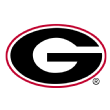 Georgia (7-0)
Georgia (7-0)
Rankings: first in the AP poll, first in SP+, first in FPI
CFP odds: 90% (down from 91% last week)
Greatest strength: the defense. Every bit of it, from 340-pound Jordan Davis eating up three blockers on every snap to free safety Lewis Cine immediately teleporting to wherever the ball is on every pass attempt and everything in between. Georgia's defense is virtually perfect -- first in defensive SP+, success rate allowed* and, well, a lot of other stuff. It knows what you're going to do before you do it, and it feels like there are always three 260-pounders waiting to dogpile the ball carrier. If you don't believe me, just ask Kentucky.
The previously unbeaten Wildcats made a respectable showing, becoming the first team to score two offensive touchdowns on the Dawgs in a 30-13 loss. The first score took 13 plays and 6:42 in the second quarter, and the second took 22 plays and 11:23 in the fourth. Kentucky had to make a combined nine third- and fourth-down conversions on those two drives (and otherwise went just 2-for-10 on third downs). All to only lose by 17. This defense remains 2011 Bama-level brilliant.
* Success rate: the percentage of plays in which an offense gains at least 50% of necessary yardage on first down, 70% on second or 100% on third or fourth.
 Oklahoma (7-0)
Oklahoma (7-0)
Rankings: third in the AP poll, second in SP+, fourth in FPI
CFP odds: 62% (up from 59%)
Greatest strength: The Sooners might have just found the explosiveness to go with their efficiency. Despite the early-season clamoring from Oklahoma fans to bench quarterback Spencer Rattler for backup Caleb Williams, there wasn't much wrong with the OU offense at the beginning of the year. The Sooners have moved the ball efficiently, and they currently rank fourth in offensive success rate. Explosiveness was an issue, however.
With Williams behind center, the big plays have returned en masse. The Sooners averaged 4.4 gains per game of 20-plus yards over their first five games, but they put up eight against Texas (six after Williams entered the game for Rattler), then nine against TCU on Saturday. Opponents will adjust, and OU's home stretch is brutal: The Sooners will play at Baylor and Oklahoma State and will host Iowa State over a three-week span in November. Any of those defenses could make Williams look like the freshman he still is. But for one Saturday, OU looked like full-blown OU again.
 Cincinnati (6-0)
Cincinnati (6-0)
Rankings: second in the AP poll, 10th in SP+, sixth in FPI
CFP odds: 61% (up from 46%)
Greatest strength: no weakest links. Cincinnati ranks 11th in points per drive and fourth in points allowed. It is 23rd in offensive success rate and fifth on defense. The Bearcats have for a number of years been driven by defense first, but the reason they have reached this level -- second in the polls with a greater than 50-50 chance of reaching the CFP despite their Group of 5 status -- is the way they have shored up their weakest links over time.
Quarterback Desmond Ridder has made some huge passes over the past two seasons, and in Saturday's 56-21 romp over Central Florida, running back Jerome Ford exploded for 212 yards and four touchdowns in just 21 touches. Better yet, the Bearcats were in fifth gear from the start. They've suffered some slow starts and offensive funks at times, but they led 14-0 after one quarter and 42-7 at halftime. Honestly, their biggest issue at this point is place kicking, which could backfire in a key moment but is generally a good "biggest weakness" to have.
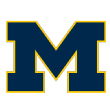 Michigan (6-0)
Michigan (6-0)
Rankings: sixth in the AP poll, eighth in SP+, fifth in FPI
CFP odds: 38% (down from 40%)
Greatest strength: no negative plays. While the Wolverines' offense lags a bit behind the defense -- Michigan is ninth in defensive SP+ and 18th on O -- it has thrived with its ability to avoid moving backward. Michigan ranks first in fewest tackles for loss allowed, second in sack rate allowed and 24th in stuff rate (run stops at or behind the line of scrimmage). Better yet, the Wolverines won't play against a defense that currently ranks in the top 30 for TFLs the rest of the regular season.
As with Georgia, we still don't know everything we need to about the Michigan attack -- namely, whether quarterback Cade McNamara can make big plays downfield when he needs to (U-M ranks 69th in passing downs success rate) or whether the Wolverines can turn scoring chances into actual TDs frequently enough (last week's fatal flaw was that they settle for too many field goals). But if you can't push them backward, their odds of moving forward are pretty good.
 Michigan State (7-0)
Michigan State (7-0)
Rankings: ninth in the AP poll, 21st in SP+, 14th in FPI
CFP odds: 10% (up from 9%)
Greatest strength: They create more explosions than you. My marginal explosiveness measure takes a field position-adjusted look at the magnitude of a team's successful plays (as defined by success rate above). When you make a big play, how big is it?
Michigan State's big plays are very big, and its opponents' big plays are very small.
The Spartans' offense ranks fourth in marginal explosiveness thanks to the cheat-code trio of running back Kenneth Walker III and wide receivers Jalen Nailor and Jayden Reed. They are averaging a combined 329 rushing and receiving yards per game, Walker has emerged as a potential Heisman Trophy candidate and Reed might be the best return man in the country. Just as importantly, the Spartans' defense ranks 10th in marginal explosiveness. Indiana was able to slow the Michigan State attack but still lost 20-15 because the Hoosiers couldn't generate anything, either. The team that makes the most big plays tends to prevail in a given football game, and that's a fight Sparty can win.
 Coastal Carolina (6-0)
Coastal Carolina (6-0)
Rankings: 14th in the AP poll, 30th in SP+, 21st in FPI
CFP odds: 4% (up from 3%)
Greatest strength: an utterly delicious offense. From a tactics standpoint, the story of the 2021 season has been the return of hard-nosed defense. It's harder to make big plays this year, and scoring is down because of it. But that's only because offenses haven't taken enough cues from Coastal Carolina just yet.
Jamey Chadwell's Chanticleers have won 17 of 18 games with quarterback Grayson McCall behind center. They execute the option and misdirection principles that Chadwell loves, but McCall's passing ability makes the offense downright unfair. He is completing 80% of his passes at 17.0 yards per completion, and he ranks sixth in Total QBR. Despite operating at one of the slowest tempos in the country, Coastal has scored at least 49 points in five of six games. The Chants have yet to face a team ranked higher than 98th in SP+, but they'll be a unique out against anyone they face in the postseason.
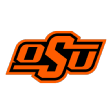 Oklahoma State (6-0)
Oklahoma State (6-0)
Rankings: fifth in the AP poll, 32nd in SP+, 28th in FPI
CFP odds: 0.8% (up from less than 0.1%)
Greatest strength: They push you backward. Playing behind schedule is like jogging with a weighted jacket on: You can do it, but it's going to wear you down over time.
Playing against the Cowboys' defense, then, must be exhausting. They stuff 32% of rushes at or behind the line (ninth in FBS) and sack the quarterback on 8% of dropbacks (21st). Ends Collin Oliver (a true freshman!), Brock Martin and Tyler Lacy have combined for 17.5 tackles for loss and 7.5 sacks, and it stands to reason that the Pokes also rank ninth in the FBS in third-down conversion rate allowed.
The damage adds up. In their past four games combined, the Cowboys have allowed between 20 and 30 total points in each of the first three quarters but only a single touchdown in the fourth. They held Texas scoreless for the last 26 minutes of a 32-24 win. They've won four one-score games, and a tightening wrench of a defense is the primary reason.
 Wake Forest (6-0)
Wake Forest (6-0)
Rankings: 16th in the AP poll, 44th in SP+, 36th in FPI
CFP odds: 0.1% (up from less than 0.1%)
Greatest strength: They're going to pass better than you. As with Oklahoma State, it's taken some close-game magic for Wake to get to this point: The Demon Deacons beat Louisville and Syracuse by a combined six points before their Week 7 bye. But while the defense most certainly needed an off week to arrest a slide, the offense has scored at least 35 points in every game thanks to a dynamic passing game.
Wake ranks 12th in passing success rate, and quarterback Sam Hartman has produced a passer rating of 155 or higher in five of six games. Hartman has leaned heavily on the wideout duo of Jaquarii Roberson and A.T. Perry (combined: 54 catches, 969 yards, nine TDs), but three others have at least 11 catches each. Combine that with a pass defense that has allowed a rating higher than 130 only twice and you've got a pretty good recipe for 2021 college football success.
One-loss teams with hope
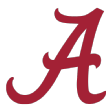 Alabama (6-1)
Alabama (6-1)
Rankings: fourth in the AP poll, third in SP+, second in FPI
CFP odds: 59% (up from 55%)
Greatest strength: They're still mostly Bama. Because Nick Saban's 2020 team was nearly perfect, it's fair that Alabama is going to get graded on an impossibly tough curve. The Crimson Tide are averaging 6.9 yards per play (14th), for instance, but they averaged 7.9 last year. They finished with one of the best SP+ ratings ever in 2020, but this year, they're merely third, 2.8 points behind torrid No. 1 Georgia.
They also just beat Mississippi State by 40. They've scored 38 or more points in six of seven games and allowed more than 21 just twice. Quarterback Bryce Young is fifth in Total QBR and first in the Heisman odds. It feels like this team has massive room for growth, but it's already one of the most proven teams in the country. If the Tide actually find fifth gear in the coming weeks, lord help everyone else in the FBS.
 Ohio State (5-1)
Ohio State (5-1)
Rankings: fifth in the AP poll, second in SP+, third in FPI
CFP odds: 36% (down from 38%)
Greatest strength: the world's greatest skill corps. It's easy to watch Buckeyes starting quarterback C.J. Stroud play and realize he still has some lessons to learn and some room to grow. It's pretty telling, then, that he already is producing an otherworldly stat line. He ranks first in Total QBR with a 66% completion rate and an 18-to-3 TD-to-INT ratio. In his past two games, he is 41-of-56 for 736 yards and 10 TDs with no picks.
Stroud has three wide receivers with chances at 1,200-yard seasons (Garrett Wilson, Chris Olave, Jaxon Smith-Njigba), and his running backs, led by freshman TreVeyon Henderson, are averaging 7.2 yards per carry and 210 yards per game. The OSU defense is suffering fewer miscues, and the Buckeyes have outscored their past three opponents by an average of 59-12. They have quickly rounded into form and still have room for improvement.
 Pittsburgh (5-1)
Pittsburgh (5-1)
Rankings: 23rd in the AP poll, 11th in SP+, seventh in FPI
CFP odds: 15% (up from 7%)
Greatest strength: overwhelming aggression. Pat Narduzzi's Panthers are incredibly well-rounded -- 13th in offensive SP+, 18th on defense, 23rd in special teams -- and they've gotten here with outright nastiness.
Kenny Pickett is completing 70% of his passes, and four of his five leading receivers are averaging at least 15 yards per catch. On defense, seven Panthers have recorded at least three tackles for loss (Habakkuk Baldonado leads the way with seven), and the Panthers rank sixth in success rate allowed. They are willing to allow the occasional big play in the name of forcing three-and-outs and turnover opportunities; and even if they get gashed, they know their offense can respond in kind. This high-volatility recipe contributed to a loss to Western Michigan in Week 3, but it also gives them an excellent chance in every single remaining game.
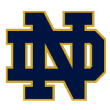 Notre Dame (5-1)
Notre Dame (5-1)
Rankings: 13th in the AP poll, 14th in SP+, 18th in FPI
CFP odds: 5% (down from 6%)
Greatest strength: an increasingly versatile defense. After suffering a number of glitches in the first two games of the season, new coordinator Marcus Freeman's defense has come along nicely, allowing just 19.8 points per game and 4.9 yards per play since then. While the offense has struggled to establish the ground game and has bounced between a trio of quarterbacks, the Fighting Irish are up to 13th in defensive SP+ and are projected favorites in each of their last six games because of it.
This defense is aggressive up front, ranking 15th in rushing success rate allowed and 14th in stuff rate, but the Irish are increasingly diverse in the back, ranking 15th in QBR allowed from man coverage and a solid 41st from zone. Safety Kyle Hamilton has lived up to his all-world hype and then some, but cover men Cam Hart and Clarence Lewis have combined to allow just 21 completions in 56 passes. Only Cincinnati has been able to find any sustained success against them.
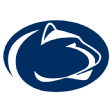 Penn State (5-1)
Penn State (5-1)
Rankings: seventh in the AP poll, sixth in SP+, 11th in FPI
CFP odds: 5% (same as last week)
Greatest strength: a great defense that gets better in the red zone. Maybe the funniest moment of last week's silly tiff between Iowa's Kirk Ferentz and Penn State's James Franklin, which revolved around injuries real and faked, was when Franklin exasperatedly pointed out that the PSU defense was playing "lights out."
He's right. Despite a run of injuries both before and during the loss to the Hawkeyes, the Nittany Lions' defense has yet to allow more than 4.7 yards per play in a game this year and grades out fifth in defensive SP+. They prevent both efficiency (17th in success rate allowed) and big plays (second in marginal explosiveness), and when opposing teams do advance the ball, they rank second in goal-to-go touchdown rate allowed (25%). The Lions' depth has been tested and has mostly passed, though there are obviously diverse tests coming down the pike, with trips to Ohio State and Michigan State and a visit from Michigan remaining on the schedule.
 Iowa (6-1)
Iowa (6-1)
Rankings: 11th in the AP poll, 16th in SP+, 16th in FPI
CFP odds: 4% (down from 25%)
Greatest strength: identity. It wasn't much of a surprise to see Iowa's lead-weight offense eventually drag the Hawkeyes down. They managed only seven points and 4.4 yards per play in a meek 24-7 loss to Purdue, and they rank just 119th in success rate.
Here's the deal, though: It still took four Iowa turnovers and superhuman performances from both Purdue quarterback Aidan O'Connell (30-of-40 for 375 yards) and wide receiver David Bell (11 catches for 240) for someone to score even 24 on the Hawkeyes. They haven't allowed more than that since late 2018. They are going to handcuff you to 24 or fewer points; they're going to dominate special teams and control field position any time they don't turn the ball over four times; and they're going to define how the game plays out. It worked to the tune of 12 straight wins before Saturday, and it wouldn't be a surprise if it started working all over again.
